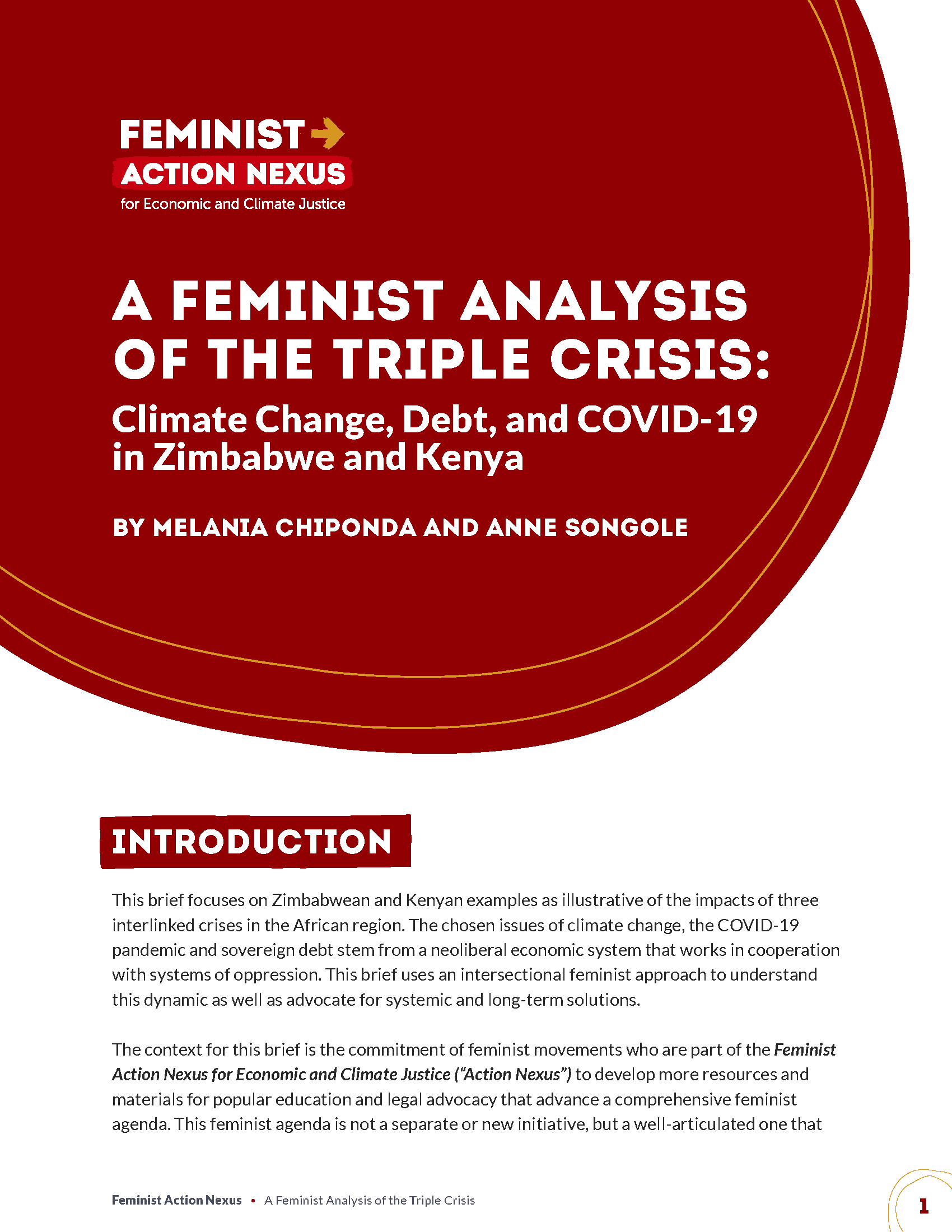This brief focuses on Zimbabwean and Kenyan examples as illustrative of the impacts of three interlinked crises in the African region. The chosen issues of climate change, the COVID-19 pandemic and sovereign debt stem from a neoliberal economic system that works in cooperation with systems of oppression. This brief uses an intersectional feminist approach to understand this dynamic as well as advocate for systemic and long-term solutions.
The context for this brief is the commitment of feminist movements who are part of the Feminist Action Nexus for Economic and Climate Justice (“Action Nexus”) to develop more resources and materials for popular education and legal advocacy that advance a comprehensive feminist agenda. This feminist agenda is not a separate or new initiative, but a well-articulated one that draws on the work of feminist movements over generations.
Download the report in English | Spanish | French
Case Studies
A. Colonial Debt, Droughts, and Structural Adjustment: the Case of Zimbabwe
Zimbabwe is one of the countries in Africa that is both disaster-prone and in a debt crisis. It’s debt is rooted in the country’s colonial history of a white supremacist government that borrowed to expand and strengthen its military power during the country’s liberation war against colonialism and white settler colonial rule. Zimbabwe has also faced climate-induced droughts in the 1980s and early 1990s, particularly the devastating drought of 1992. During the drought of 1992, as one example – and coupled by several other factors – the government of Zimbabwe was unable to meet its debt obligations. Its loans were extended on condition that the country adopt neoliberal economic policies through implementation of the Economic Structural Adjustment Programme (ESAP). This implies that the government had to cut expenditure through laying off multitudes of its workers, liberalise trade, remove government subsidies, introduce user fees, and privatise public services, amongst other measures. This resulted in extreme impoverishment of the people of Zimbabwe who were already devastated by the drought.
B. The Locust Invasion, Debt, and COVID-19: the Case of Kenya
Kenya is another African country trapped in debt while its people struggle through climate-induced disasters. It is unclear whether the country inherited a colonial debt or not, but there are indications that financial infrastructure was commercial, revolving around land ownership and agriculture and heavily focused on a system of accumulation that spilled over to the postcolonial era. The COVID-19 pandemic came at a time when the country was struggling to control a locust invasion, which were both taking place in Kenya amid a worsening debt situation. Borrowing related to the pandemic alone amounted to USD 2.9 billion in 2020, and in January 2021, Kenya suspended debt repayment amounting to USD 514 million in response to the pandemic. In order to deal with increased foreign debt, the government of Kenya proposed relying on fiscal consolidation plans that included reducing public spending to manage the escalating debt, which in turn would have impacts on basic public services like health and education.



